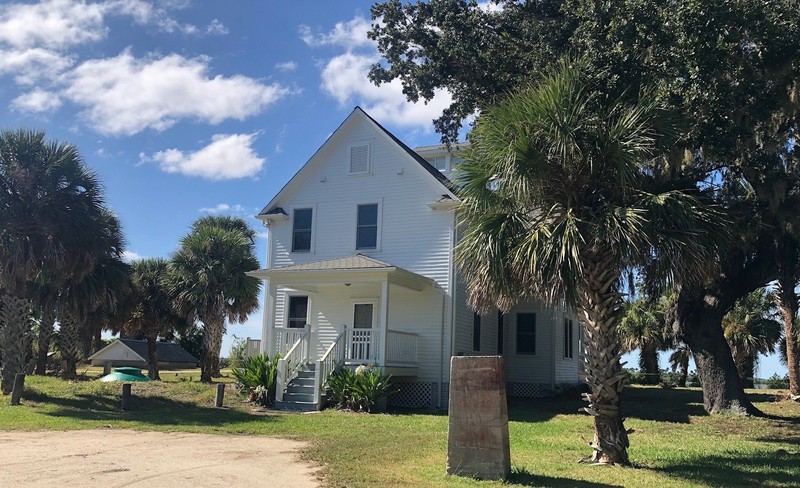Eldora House
Introduction
Text-to-speech Audio
Images
Plaque of information on the Eldora Village.

Eldora house.

Eldora House.

View from the front porch of the water that boats would take coming to the Eldora Village.

They have Audio tours of the house and the park area itself.

The Eldora house before it's restoration.

Road you walk down to get to the Eldora house.

Back view of the Eldora House

Backstory and Context
Text-to-speech Audio
The Eldora House is significant to many people because it’s a part of a town that is no longer there, it’s a part of history that is basically gone. Only a few houses are still left today that aren’t open to the public. The house was used for so many different reasons back in the day and the house is now a museum that you can go to and learn about all the different things that used to happen at the house or Mosquito Lagoon like; Coast-Guard life-saving stations, the life of house servants there, how steam boats used to go through the Lagoon and stop in the town, the fishing industry, and the major restoration the house went through starting in 1989 before it became the museum it is today. The museum also has some artifacts like bottles they’ve found around the area and it has old pictures of the original house before it was restored as well.
Before Eldora was a major town, it was home to Native Americans and people who were just living off of the land there. The Native Americans left behind mounds which some are still there like by the Eldora State House, but many are now under water. Most of the mounds were destroyed unfortunately and were eventually used for making roads and building houses and such. New Smyrna Beach was eventually established in 1768 by Dr. Andrew Turnbull, the colony at the time had 1,225 immigrants. They were growing commercial crops on the coastal plantations like rice, corn, cotton, and many other things.
Sources
Restoration of Eldora House. Local Legacies. . Accessed September 27, 2018. http://memory.loc.gov/diglib/legacies/loc.afc.afc-legacies.200002855/default.html.
History of New Smyrna Beach. . Accessed September 27, 2018. https://www.cityofnsb.com/198/History.
Great Freeze (1894-1895). Florida Memory. December 18, 2012. Accessed September 27, 2018. https://www.floridamemory.com/blog/tag/great-freeze-1894-95/.
Peroldo, Robin. The Great Freezes and the collapse of the Florida citrus industry. Florida History. May 27, 2017. Accessed November 13, 2018. https://medium.com/florida-history/the-great-freezes-1894-95-and-the-collapse-of-the-florida-orange-industry-7442e5d75337.
